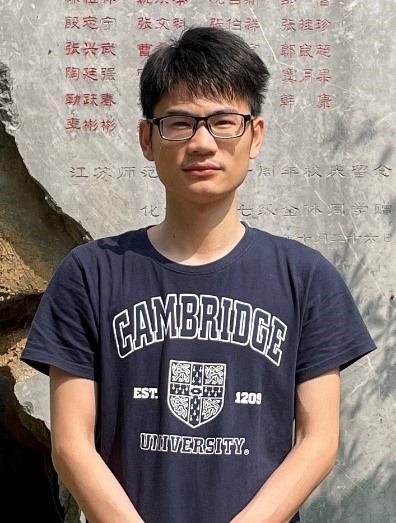Recently, the research group of Associate Professor Yang Yang from the School of Chemistry and Materials Science of Jiangsu Normal University (JSNU) has achieved great progress in the chemical research of copper nano-clusters in cooperation with the research group of Professor Sun Di from Shandong University. The paper entitled Eight-Electron Superatomic Cu31 Nanocluster with Chiral Kernel and NIR-II Emission was published in the international authoritative journal J. Am.Chem. Soc. (IF: 16.383). Associate Professor Yang Yang and Professor Sun Jie are the corresponding authors, and JSNU is the first signature unit.


Atomically precise coinage-metal nanoclusters are attracting considerable attention due to their appealing aesthetic structures, promising luminescent and catalytic properties. The confluence of molecular and bulk-like characteristics makes nanoclusters the perfect linkage between small molecular complexes and plasmonic nanoparticles. The past decade has witnessed great advances in the synthesis and characterization of Au and Ag nanoclusters. Copper nanoclusters have also demonstrated promising luminescent and catalytic properties, which make them competitive with the more expensive gold and silver clusters. The development of copper nanoclusters has trailed far behind the well-researched Au and Ag nanoclusters, especially for Cu(0)-containing ones. The two research groups led by Yang Yang and Sun Di jointly report the first novel eight-electron superatomic copper nanocluster [Cu31(4-MeOPhC≡C)21(dppe)3](ClO4)2(Cu31, dppe=1,2-bis(diphenylphosphino)ethane) . And the following problems are solved:
(1) To date, only a handful of Cu(0)-containing copper nanoclusters have been documented, eight free electrons structure which is common in gold and silver nanoclusters has never been reported in copper nanoclusters. A major reason for this is believed to be the much lower M(I)/M(0) half-cell reduction potential of copper (0.52 V) than those of silver (0.80 V) and gold (1.69 V), which makes the Cu(0)-containing clusters air-sensitive and challenging to achieve. (2) The second near-infrared (NIR-II) window is beneficial to deeper tissue imaging and reduced photon scattering when applied in bioimaging and thus is highly desirable. The emission peaks of copper nanoclusters always lie in the visible range while only several ones have emissions in the first near-infrared region (<1000 nm). It is not sure that whether cheaper congeners possess NIR-II emission like gold, silver, and alloy nanoclusters.
ABSTRACT: Owing to the inherent instability caused by the low Cu(I)/Cu(0) half-cell reduction potential, Cu(0)-containing copper nanoclusters are quite uncommon in comparison to their Ag and Au congeners. Here, a novel eight-electron superatomic copper nanocluster [Cu31(4-MeO-PhC≡C)21(dppe)3](ClO4)2(Cu31, dppe=1,2-bis(diphenylphosphino)ethane) is presented with total structural characterization. The structural determination reveals that Cu31 features an inherent chiral metal core arising from the helical arrangement of two sets of three Cu2units encircling the icosahedral Cu13 core, which is further shielded by 4-MeO-PhC≡C― and dppe ligands. Cu31 is the first copper nanocluster carrying eight free electrons, which is further corroborated by electrospray ionization mass spectrometry, X-ray photoelectron spectroscopy and density functional theory calculations. Interestingly, Cu31 demonstrates the first near-infrared (750−950 nm, NIR-I) window absorption and the second near-infrared (1000−1700 nm, NIR-II) window emission, which is exceptional in the copper nanocluster family and endows it with great potential in biological applications. Of note, the 4-methoxy groups providing close contacts with neighboring clusters are crucial for the cluster formation and crystallization, while 2-methoxyphenylacetylene leads only to copper hydride clusters, Cu6H or Cu32H14. This research not only showcases a new member of copper superatoms but also exemplifies that copper nanoclusters, which are nonluminous in the visible range may emit luminescence in the deep NIR region.
Link to the paper: https://pubs.acs.org/doi/10.1021/jacs.3c02215

Yang Yang is an Associate Professor, a Doctor of Science and a tutor of postgraduate students. In 2011 and 2016, he received his Bachelor of Science and Ph.D. degrees from Xiamen University. His was supervised by Professor Wang Quanming. From August 2019 to March 2021, he carried out visiting scholar and postdoctoral researches at the University of Cambridge, with the co-supervisor Professor Jonathan Nitschke. In recent years, he has presided over and completed 4 Projects. He has published more than ten papers as the first author or corresponding author in Nat.Commun., J. Am. Chem. Soc. and Angew. Chem. Int. Ed. as well as some other high-level academic journals.
